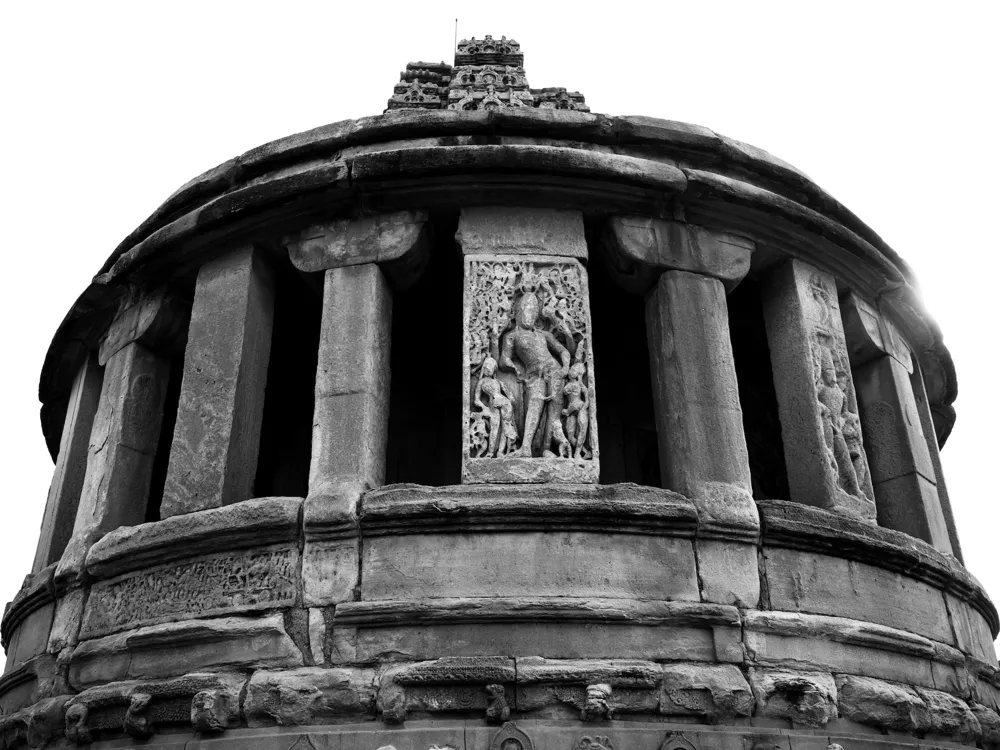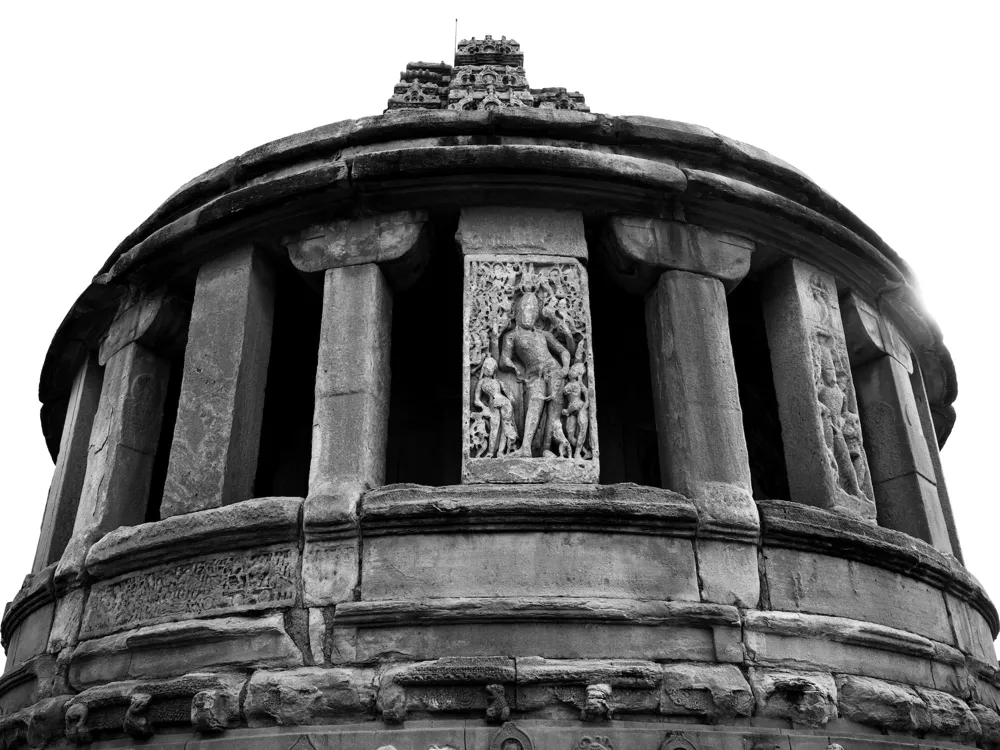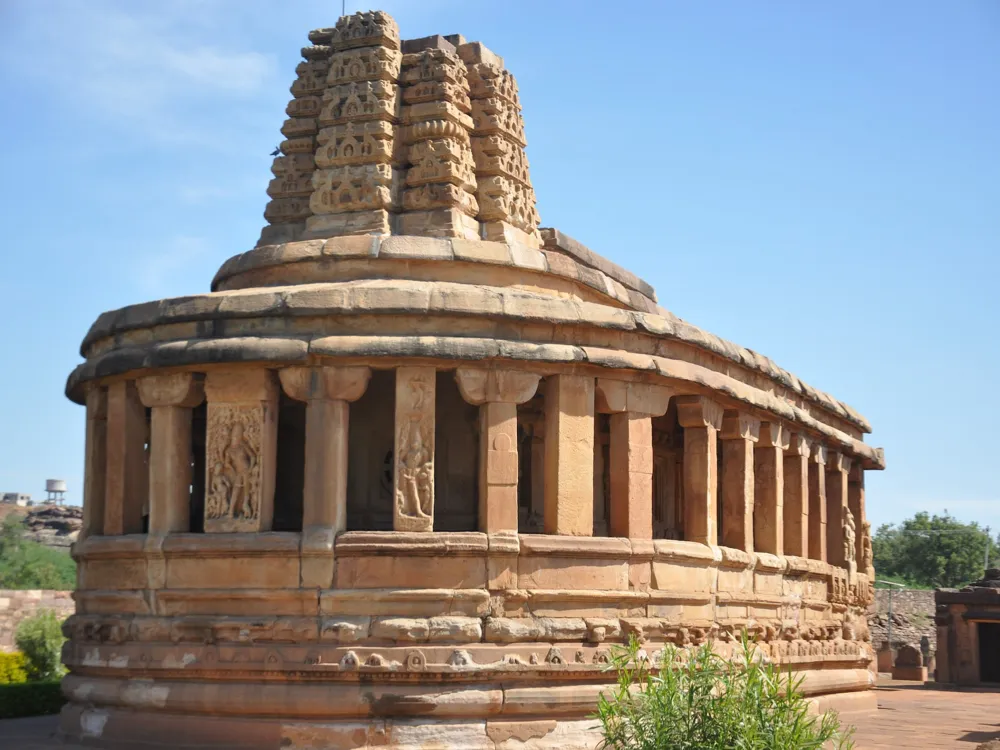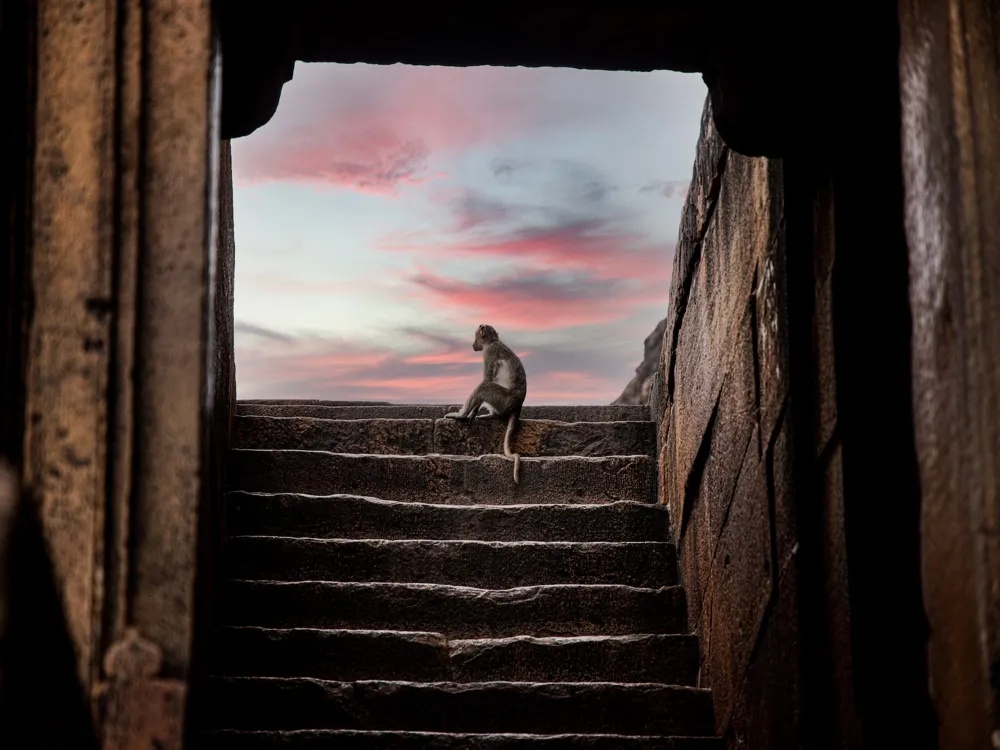The Gowda Temple in Aihole, Karnataka, is a magnificent example of ancient Indian architecture, steeped in history and spiritual significance. Situated in the village of Aihole, known as the 'Cradle of Indian Temple Architecture,' this temple stands as a testament to the architectural prowess of the Chalukya dynasty. The temple's origin dates back to the 6th century, making it a significant historical landmark. The Gowda Temple is renowned for its intricate carvings, stone work, and the unique blend of Dravidian and Nagara architectural styles. Aihole, as an archaeological site, holds over 125 temples, with the Gowda Temple being one of the most prominent. The temple's design reflects the early stages of Hindu temple architecture and showcases the evolution of temple construction techniques over centuries. The main deity worshipped here is Lord Shiva, depicted through a Lingam, a symbolic representation found in the inner sanctum. The temple complex is a harmonious amalgamation of various smaller shrines and structures, each narrating a story of religious and cultural significance. The architecture of the Gowda Temple is a marvel, combining elements of both the Dravidian and Nagara styles, a characteristic feature of the Chalukyan era. The temple's layout is distinctive, with a sanctum (garbhagriha), a main hall (mandapa), and an entrance porch (mukhamandapa). The garbhagriha is designed as a simple, small square room housing the deity. The mandapa is spacious, allowing devotees to gather and participate in rituals and prayers. One of the most striking features of the Gowda Temple is its elaborate sculptural work. The walls are adorned with intricate carvings depicting various Hindu deities, mythological scenes, and narratives from ancient texts. The carvings are not just religious but also portray the social and cultural life of the period. The temple's outer walls and pillars are embellished with detailed sculptures, showcasing the artisans' skill and attention to detail. Visitors should wear modest clothing that covers shoulders and knees as a sign of respect for the temple's religious significance. While photography may be allowed in certain areas, it's advisable to check with temple authorities regarding restrictions, especially in the inner sanctum. Consider taking a guided tour for a comprehensive understanding of the temple's history, architecture, and cultural importance. Be mindful of local customs and etiquette, such as removing shoes before entering the temple premises and maintaining a respectful demeanor. Gowda Temple is accessible via various modes of transportation. The nearest airport is in Belgaum, approximately 150 km away. From there, visitors can hire taxis or use public transportation to reach Aihole. The nearest railway station is Bagalkot, about 34 km from Aihole. Regular bus services also connect Aihole with major cities in Karnataka, making it convenient for travelers to visit this historical site. For those driving, Aihole is well-connected by road to various cities in the region. Read More:Overview of Gowda Temple of Aihole, Karnataka
Architecture of Gowda Temple
Tips When Visiting Gowda Temple
Dress Appropriately
Photography Guidelines
Guided Tours
Local Etiquette
How To Reach Gowda Temple.
Gowda Temple
Aihole
Karnataka
NaN onwards
View aihole Packages
Aihole Travel Packages
View All Packages For Aihole
Top Hotel Collections for Aihole

Private Pool

Luxury Hotels

5-Star Hotels

Pet Friendly
Top Hotels Near Aihole
Other Top Ranking Places In Aihole
View All Places To Visit In aihole
Faq on Aihole
What is Gowda Temple in Aihole?
The Gowda Temple in Aihole is a historic Hindu temple dedicated to Lord Shiva. It is renowned for its exquisite architecture and intricate carvings, dating back to the Chalukya dynasty.
When was the Gowda Temple built?
The Gowda Temple in Aihole was built during the 6th or 7th century CE, during the rule of the Chalukya dynasty.
Who built the Gowda Temple in Aihole?
The exact identity of the builder of the Gowda Temple is not known. However, it is believed to have been commissioned by a local chieftain or a noble during the Chalukyan period.
What is the architectural style of the Gowda Temple?
The Gowda Temple exhibits early Chalukyan architectural style, characterized by a simple yet elegant design with intricate carvings adorning the walls and pillars. It showcases elements of both Dravidian and Nagara architectural styles.
What are the main features of the Gowda Temple?
The Gowda Temple is known for its unique plan, consisting of a sanctum, an antechamber, and a pillared hall. It also features intricately carved panels depicting scenes from Hindu mythology, along with finely sculpted pillars and decorative motifs.
View aihole Packages
Aihole Travel Packages
View All Packages For Aihole
Top Hotel Collections for Aihole

Private Pool

Luxury Hotels

5-Star Hotels

Pet Friendly
Top Hotels Near Aihole
Other Top Ranking Places In Aihole
Faq on Aihole
What is Gowda Temple in Aihole?
The Gowda Temple in Aihole is a historic Hindu temple dedicated to Lord Shiva. It is renowned for its exquisite architecture and intricate carvings, dating back to the Chalukya dynasty.
When was the Gowda Temple built?
The Gowda Temple in Aihole was built during the 6th or 7th century CE, during the rule of the Chalukya dynasty.
Who built the Gowda Temple in Aihole?
The exact identity of the builder of the Gowda Temple is not known. However, it is believed to have been commissioned by a local chieftain or a noble during the Chalukyan period.
What is the architectural style of the Gowda Temple?
The Gowda Temple exhibits early Chalukyan architectural style, characterized by a simple yet elegant design with intricate carvings adorning the walls and pillars. It showcases elements of both Dravidian and Nagara architectural styles.
What are the main features of the Gowda Temple?
The Gowda Temple is known for its unique plan, consisting of a sanctum, an antechamber, and a pillared hall. It also features intricately carved panels depicting scenes from Hindu mythology, along with finely sculpted pillars and decorative motifs.





















